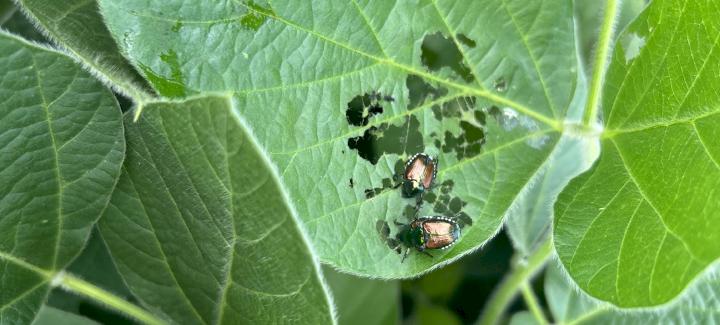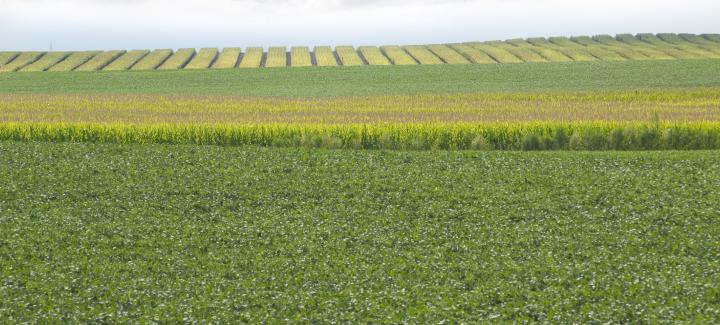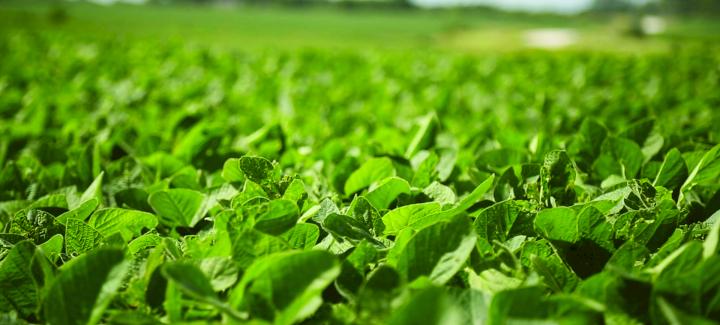Japanese beetles are out in full force in crop production areas across the U.S. These small, metallic-green flying pests are problematic to corn and soybean growers, especially during pollination. And where there’s one, there are many. Here’s what we know about Japanese beetles — from their introduction to the U.S. to their features, vegetation preferences, patterns and best management strategies to combat them in the growing season.
- They’ve been around for over a century. According to Iowa State University Extension and Outreach, Japanese beetles were first introduced to the U.S. in 1916 in New Jersey and have since moved westward.
- They travel in packs. Japanese beetles come with friends. When feeding, they emit a pheromone that attracts hordes of other beetles. Growers may notice a group of beetles clustered together feeding on the vegetation of a plant.
- They’re colorful and nimble. Adult Japanese beetles have a metallic-green head and shiny copper-colored wings. They are known to be excellent flyers, easily traveling from field to field as adults.
- They overwinter in the soil. The beetles overwinter in the soil as grubs and start their path to emergence once spring soils have reached 50 degrees Fahrenheit. Their emergence starts south to north. For example, growers in the Midwest might notice their emergence as adults in late June and early July.
- They prefer soybeans to corn, but both play host. Japanese beetles chew on foliage, including soybean leaves and some corn leaves. Experts say they prefer soybeans to corn. In soybeans, they feed on plant leaves, typically in the upper canopy, and cause skeletonization of the leaves. Essentially, they eat the tissue between the leaf veins forming heavy defoliation in fields. In corn, they typically eat silks. Unfortunately, silk clipping can lead to pollination issues and negatively impact grain fill. Adults may also feed on the grain.
- Scouting is key. Japanese beetles are mostly found on the outside parameters of fields, but it’s important to check whole fields for their presence. There are Japanese beetle traps available that use a combination of pheromones and floral scents to attract the hordes, but scouting different regions of both corn and soybean fields is also an effective way to check thresholds. In soybeans, our experts recommend gathering 10 to 15 trifoliates from random plants, working your way from the bottom to the top of the plant, then repeating the process in three to four different areas of the field. In corn, Purdue Extension recommends checking five plants at random in five different areas of the field to record numbers of beetles found on each plant. Then, check the length of the silks on each plant and if pollen is still shedding from each plant.
- Threshold calculations from scouting can help determine next steps. Iowa State University Extension recommends that treatment in soybeans be considered if 30% of the leaf is skeletonized before bloom and 20% defoliation after bloom. For corn, foliar insecticide should be considered at tasseling and silking if three or more beetles can be found per ear, if the beetles have clipped silks to less than half an inch in size, if pollination has not yet reached 50% complete or if three or more beetles are present per ear.
If you’ve reached these thresholds, our experts recommend applying a Lorsban-type insecticide over the canopy of affected corn and soybean fields. This will help control populations and further damage to the plants by the pests.
To learn more about signs of Japanese beetles and how to protect your fields, contact your local Stine representative or university extension office.
![YIELD[+]](/images/site/global/logos/yield-plus.png)




